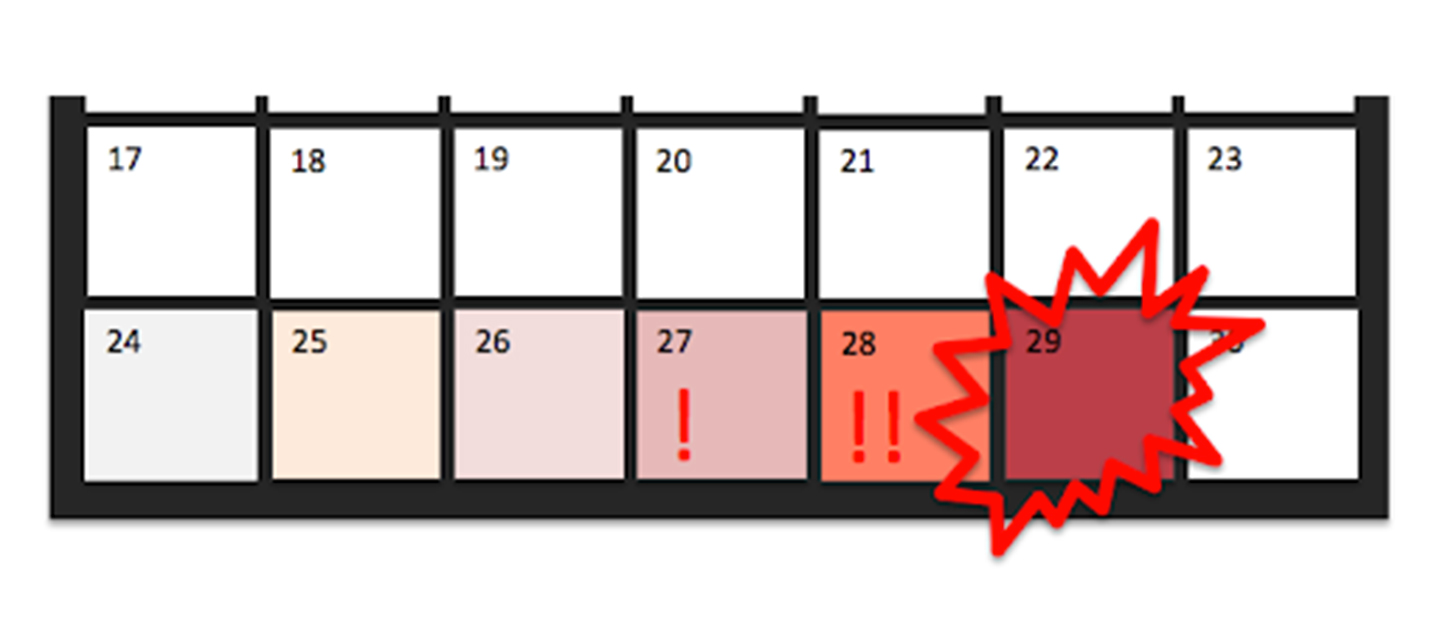Center for Excellence in Teaching and Learning
100 Library Drive
Rochester, Michigan 48309-4479
(location map)
(248) 370-2751
[email protected]

Procrastination: Changing Small Habits Has Big Payoffs
Procrastination is too often perceived as an inevitable condition of university classes. Sometimes it is worn as a badge of honor, students bragging that they crammed work designed for a two-week work span into six hours. But students and faculty lose out on rich learning opportunities. Students are less likely to retain and transfer what they have learned: while cramming can result in the type of short-term memory required to score well on an exam, that knowledge is not solidified in a meaningful way (see the Small, Frequent Practice Makes Permanent teaching tip). Faculty can also be disappointed at a lack of depth in the work and connection to concepts covered across the semester.
The good news is that procrastination is predictable and can be rewired. We can also consider how course design can either encourage or prevent procrastination.
How to Undermine Procrastination in Learning
- Evaluate course design for procrastination traps.
College courses can set up students for procrastination’s grasp. By scaffolding larger projects with smaller checkpoints, or at least providing tips on how much progress students should be making, students will better sidestep procrastination traps. If you want students to practice this skill for themselves, prompt them to make a plan. Questions like these can help.
- How much time do you spend reading per week?
- How long is a typical study session?
- Invite students to use the Pomodoro Technique for getting started.
Procrastination makes it literally painful to start a task, especially if it is overwhelming in scope or difficulty. The Pomodoro Technique, which comes from a “tomato”-shaped timer, meets this challenge by encouraging students to spend a small amount of time on a task: “Just spend 20 minutes working on this part. That’s it! Anyone can work on this for 20 minutes!” This technique shifts the focus from product (finishing a 20-page research paper) to process (a set amount of time to identify which research studies on a similar topic relevant to the paper). Once students get going, they’ll be surprised that they are on a roll and don’t want to stop once the 20 minutes has expired. - Help students identify procrastination cues and rewards, and rewire them.
Habit loops are developed by a cue, routine, and reward. The procrastination cue is the stress of difficult work, which often leads to a routine of controllable tasks, such as browsing social media, checking messages, or cleaning. Ask students what new routines can replace these less-productive routines, such as the Pomodoro Technique or focusing on smaller tasks. Then, by placing a reward after this work, good habits are taking place! - Share your own trials and tribulations with procrastination.
Let’s admit it: some are procrastinators, and maybe even proud of it! While everyone has different learning and working preferences--and procrastination may sometimes work for some people sometimes--it is not a productive habit for sustaining high productivity and deep learning. Share with students your own cautionary tales of procrastination and how you work to prevent or harness procrastination.
Focused and Diffuse Modes, from OU’s Barbara Oakley’s Learning How to Learn MOOC
For more on the content presented in this CETL Teaching Tip, view the videos in Procrastination and Memory (Week 3) in the Learning How to Learn MOOC, featuring OU engineering professor Barbara Oakley and Terrence Sejnowski, UC San Diego biological studies professor.
Save and adapt a Google Doc version of this teaching tip.
About the Author
Written and designed by Christina Moore, Center for Excellence in Teaching and Learning at Oakland University. Published May 2019. Others may share and adapt under Creative Commons License CC BY-NC.